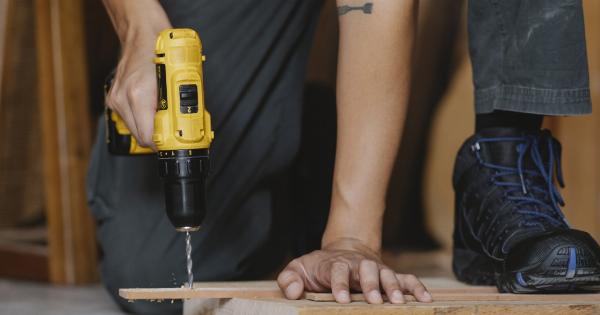Do you find yourself constantly battling sweaty legs, leaving you feeling uncomfortable and self-conscious? You’re not alone. Excessive sweating, also known as hyperhidrosis, is a common condition that affects many individuals.
In this ultimate guide, we will dive deep into the causes of sweaty legs and provide you with effective solutions to keep your legs dry and sweat-free!.
Understanding the causes of sweaty legs
Before we delve into the solutions, let’s first understand what causes sweaty legs. Sweating is a natural process that helps our body regulate temperature.
However, some people experience excessive sweating in certain parts of their body, including their legs. Here are a few factors that contribute to sweaty legs:.
1. Hyperhidrosis
Hyperhidrosis is a medical condition that causes excessive sweating. It can be a primary condition, which means there is no known cause, or secondary to an underlying health issue.
If you suspect that hyperhidrosis is the root cause of your sweaty legs, it’s advisable to consult a healthcare professional for an accurate diagnosis and treatment options.
2. Hot and humid weather
Sweating is the body’s natural response to hot and humid weather. As the temperature rises, your body attempts to cool down by producing sweat.
However, some individuals’ sweat glands may be more active, leading to excessive sweating, including on the legs.
3. Intense physical activity
Engaging in intense physical activity or exercises that involve the lower body can lead to sweaty legs. The increased exertion and elevated body temperature stimulate the sweat glands, causing more perspiration in the leg area.
4. Anxiety and stress
Emotional factors such as anxiety and stress trigger the body’s natural stress response, leading to excessive sweating. This can result in sweaty legs, especially during stressful situations or episodes of anxiety.
Effective ways to keep your legs dry
Now that we understand the causes, let’s explore some effective ways to keep your legs dry and comfortable:.
1. Use antiperspirant
Antiperspirants are not just for your underarms! You can apply antiperspirant to your legs as well. Look for antiperspirants that contain aluminum chloride, as it helps reduce sweat production.
Apply it to clean, dry skin before going to bed, and let it work its magic overnight.
2. Choose breathable fabrics
Wearing breathable fabrics like cotton and linen allows air to circulate around your legs, reducing sweat buildup. Avoid synthetic materials that trap heat and moisture, exacerbating sweaty legs. Opt for loose-fitting clothing that provides ventilation.
3. Stay hydrated
Drinking an adequate amount of water helps regulate your body’s temperature. When your body is hydrated, it is less likely to rely on sweating as a cooling mechanism.
Stay hydrated throughout the day and reduce your caffeine and alcohol intake, as they can contribute to excessive sweating.
4. Practice good hygiene
Maintaining good hygiene is crucial when dealing with sweaty legs. Take regular showers and pay extra attention to cleaning your leg area. Use mild antibacterial soap to reduce bacteria growth and minimize any potential odor associated with sweating.
5. Wear moisture-wicking socks
Sweaty legs can also lead to sweaty feet. Opt for moisture-wicking socks that draw moisture away from your skin, keeping your feet dry.
This can prevent uncomfortable irritation and reduce the likelihood of developing fungal infections such as athlete’s foot.
6. Use talcum powder
Talcum powder, also known as baby powder, absorbs moisture and helps keep your legs dry. Apply a generous amount of talcum powder to your legs after showering or whenever you feel excessive sweating.
It also helps prevent chafing and friction between the legs.
7. Try prescription medications
If home remedies and lifestyle changes don’t provide sufficient relief, consider talking to your doctor about prescription medications. There are oral medications and topical creams available that can help reduce excessive sweating.
8. Botox injections
In severe cases of hyperhidrosis, where other treatments haven’t been effective, Botox injections may be recommended. Botox injections block the nerves responsible for sweating and can provide significant relief for sweaty legs.
Consult a dermatologist who specializes in hyperhidrosis for more information.
9. Relaxation techniques
Since stress and anxiety can contribute to sweaty legs, practicing relaxation techniques such as deep breathing, meditation, and yoga can help manage excessive sweating. These techniques help calm the mind and reduce the body’s stress response.
10. Consult a healthcare professional
If your sweaty legs significantly impact your daily life or if you suspect an underlying medical condition, it’s essential to consult a healthcare professional.
They can evaluate your symptoms, provide an accurate diagnosis, and recommend appropriate treatment options tailored to your specific needs.































